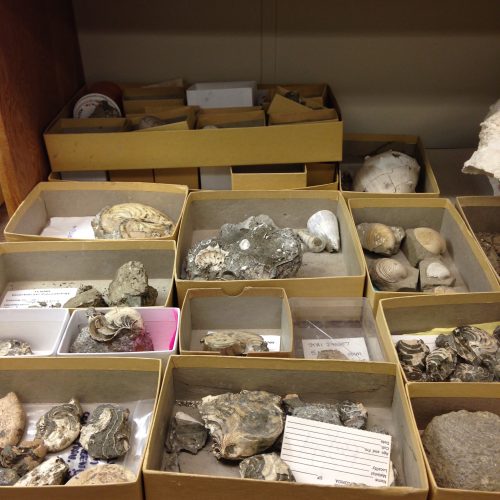My name is Will Tifft and I am one of the PIRE interns working in invertebrate paleontology. I graduated from Hamilton College this past May with a Bachelor’s Degree in Geoscience. Before coming to the Florida Museum of Natural History I spent the summer interning at the Paleontological Research Institute (PRI) assisting a PhD student with his work on Eocene posters from the Atlantic Coast. In the future I’m interested in studying brachiopods as well as microfossils. While working on the PIRE project I am mainly interested in getting the most research experience I can.

For the past month I have been working on preparing many of the invertebrate fossils brought back from Panama. This process includes doing simple things like gluing specimens back together and hardening them all the way to using the rock saws and air abrasive unit. Besides gluing, the first prepping project I worked on used the air scribe, which is a small jackhammer that uses compressed air to remove matrix from around a specimen. This has become the main process by which I prepare specimens. The air abrasive unit uses compressed air to shoot sodium bicarbonate pellets at the specimen to remove smaller amounts of soft matrix. When used correctly it is much less damaging to the specimen than the air scribe.

While I was working on projects with the air scribe and abrasive unit, I was also working on several shells and other specimens that had to be glued back together. For most of these Elmer’s glue is sufficient enough to hold them together. In order to hold the specimen in the correct position while it is drying, a sandbox is used. The sand gives more support to the pieces while they dry than placing it on the table or even trying to hold it in place. It also allows the person preparing it to work on other projects while it dries. When this isn’t strong enough, Butvar or Epoxy is used, though it is more damaging to the specimen if it gets on the shell or exposed surface. Often times specimen that are still contained with a partial matrix are brittle and will fall apart when exposed. In order to prevent the specimen from falling apart B-72 is applied to the surface. This soaks into the shell and gives it some extra strength.